Exoplanets in the Habitable Zone: Five Worlds That Could Be Home to Alien Life Part 2
Five Worlds in the Habitable Zone: A Closer Look at Exoplanets That Could Host Alien Life
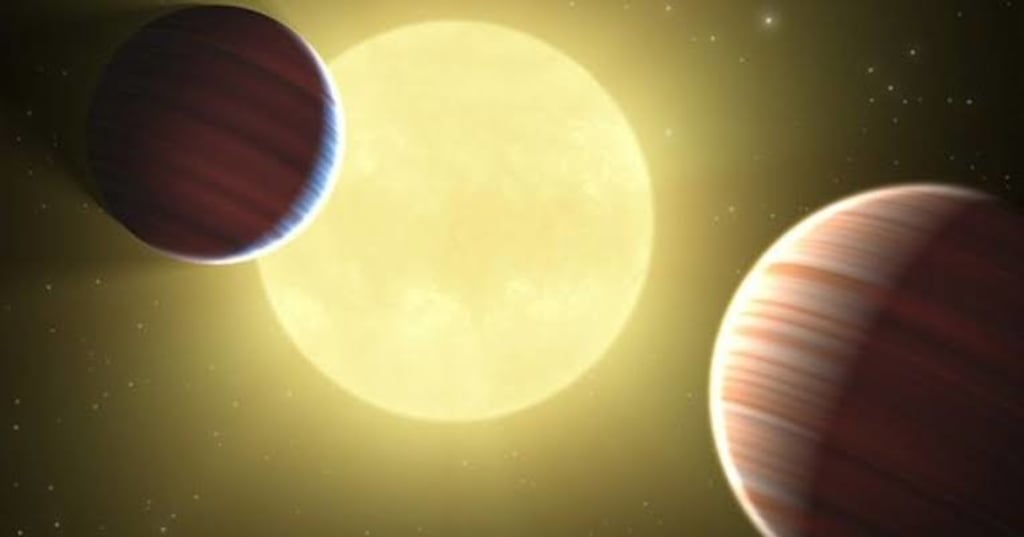
HD 85512b
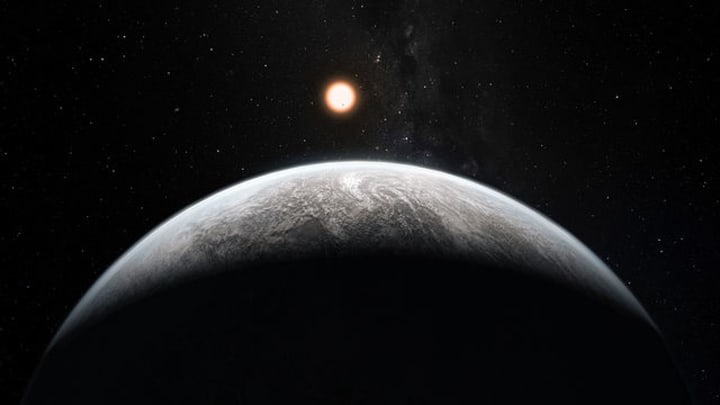
HD 85512b is an exoplanet, which means it is a planet located outside our solar system, orbiting a star called HD 85512. This star is located about 35 light-years away in the constellation Vela.
The exoplanet was discovered in 2011 by the HARPS (High Accuracy Radial Velocity Planet Searcher) instrument, which is part of the European Southern Observatory's La Silla Observatory in Chile. The planet has a mass about 3.6 times that of Earth and is about 0.12 astronomical units away from its host star.
HD 85512b is classified as a super-Earth, which means it has a size and mass between that of Earth and Neptune. Its surface temperature is estimated to be about 725 degrees Fahrenheit (385 degrees Celsius), which is too hot to support life as we know it.
However, the planet's orbit is located within the habitable zone of its star, which is the region where temperatures are suitable for liquid water to exist on the surface of a planet, raising the possibility of the planet harboring some form of life.
Overall, HD 85512b is an interesting target for further studies and observations as it provides insights into the diversity of exoplanetary systems and may potentially offer clues to the search for habitable worlds beyond our solar system.
Tau Ceti e
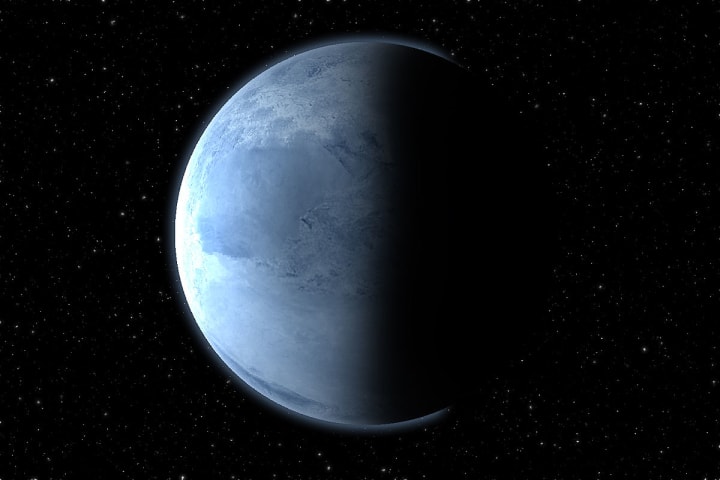
Tau Ceti e is an exoplanet orbiting the star Tau Ceti, which is located about 12 light-years away from Earth in the constellation Cetus. Tau Ceti is a G-type star, similar in size and temperature to our Sun, making it an interesting target for the search for potentially habitable exoplanets.
Tau Ceti e was first discovered in 2012 using radial velocity measurements, which track the periodic wobble of a star caused by the gravitational pull of an orbiting planet.
The planet has a minimum mass of about 3.9 times that of Earth and orbits its star every 168 days at a distance of 0.55 astronomical units.
One of the most intriguing features of Tau Ceti e is its location in the habitable zone of the star, which is the region where temperatures are suitable for liquid water to exist on the surface of a planet.
However, the exact conditions on the planet are still unknown, and it is unclear whether the planet has a thick atmosphere, or whether it has a rocky or oceanic surface.
Recent studies have suggested that Tau Ceti e may be subject to strong radiation from its host star, which could make it difficult for life as we know it to exist on its surface.
Nonetheless, the planet remains an important target for future observations and studies, as it offers insights into the diversity of exoplanetary systems and the potential for habitable worlds beyond our Solar System.
Gliese 163c

Gliese 163c is an exoplanet that orbits the star Gliese 163, located about 49 light-years away in the constellation Dorado. The planet was first discovered in 2012 by the HARPS (High Accuracy Radial velocity Planet Searcher) instrument, which is part of the European Southern Observatory's La Silla Observatory in Chile.
Gliese 163c is a super-Earth, with a mass of about 6.9 times that of Earth and a radius that is estimated to be about 1.8 times that of Earth. It orbits its host star in about 26 days at a distance of about 0.05 astronomical units.
One of the most intriguing features of Gliese 163c is its location in the habitable zone of its star, which is the region where temperatures are suitable for liquid water to exist on the surface of a planet. This makes it one of the few exoplanets discovered so far that could potentially support life as we know it.
However, little is known about the planet's atmosphere or surface conditions. Some models suggest that the planet may have a thick atmosphere that could trap heat, while others suggest that it may be a rocky planet with little to no atmosphere.
Additional observations and studies will be necessary to learn more about the planet's characteristics and the potential for habitability.
In summary, Gliese 163c is an exoplanet that offers tantalizing prospects for the search for habitable worlds beyond our solar system. While much is still unknown about this planet, it represents a promising target for future studies and observations.
Gliese 581d
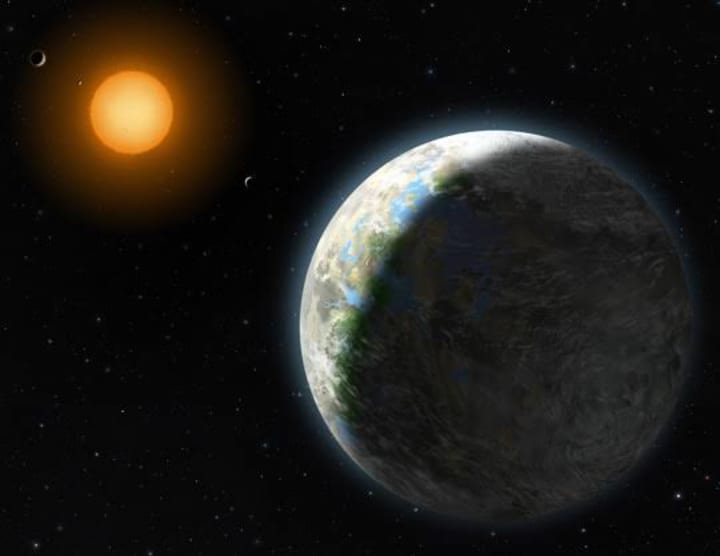
Gliese 581d is an exoplanet that orbits the star Gliese 581, located about 20 light-years away in the constellation Libra. It was first discovered in 2007 by the HARPS (High Accuracy Radial Velocity Planet Searcher) instrument, which is part of the European Southern Observatory's La Silla Observatory in Chile.
Gliese 581d is a super-Earth, with a mass of about 6.98 times that of Earth and a radius estimated to be about 2.2 times that of Earth. It orbits its host star in about 67 days at a distance of about 0.22 astronomical units.
The planet is located in the habitable zone of its star, which is the region where temperatures are suitable for liquid water to exist on the surface of a planet.
However, due to its mass and radius, it is likely that the planet has a thick atmosphere with a high concentration of carbon dioxide, which could cause a greenhouse effect and result in surface temperatures that are too hot to support life as we know it.
Nonetheless, some models suggest that Gliese 581d may have a stable climate and liquid water at the surface if it has a thick enough atmosphere with sufficient amounts of water vapor and other greenhouse gases.
However, these models remain highly speculative, and additional observations and studies will be necessary to learn more about the planet's characteristics and the potential for habitability.
In summary, Gliese 581d is an exoplanet that offers intriguing prospects for the search for habitable worlds beyond our solar system, but much is still unknown about its conditions and whether it could support life.
Tau Ceti f
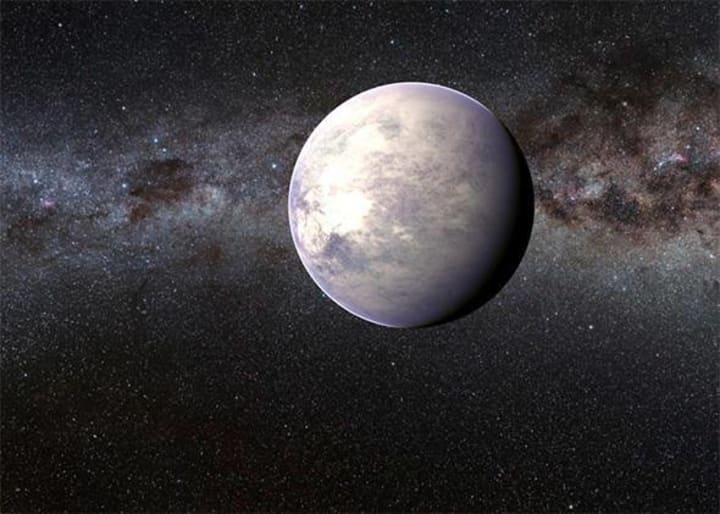
Tau Ceti f is an exoplanet orbiting the star Tau Ceti, which is located about 12 light-years away from Earth in the constellation Cetus. Tau Ceti is a G-type star, similar in size and temperature to our Sun, making it an interesting target for the search for potentially habitable exoplanets.
Tau Ceti f was first detected in 2012 using radial velocity measurements, which track the periodic wobble of a star caused by the gravitational pull of an orbiting planet.
The planet has a minimum mass of about 4.3 times that of Earth and orbits its star every 635 days at a distance of about 1.35 astronomical units.
Tau Ceti f is located in the outer part of the habitable zone of its star, which is the region where temperatures are suitable for liquid water to exist on the surface of a planet.
However, the exact conditions on the planet are still unknown, and it is unclear whether the planet has a thick atmosphere, or whether it has a rocky or oceanic surface.
One of the challenges in assessing the potential habitability of Tau Ceti f is that the planet is subject to higher levels of stellar activity than Earth, which could cause a more hostile environment for life.
However, it remains an important target for future observations and studies, as it offers insights into the diversity of exoplanetary systems and the potential for habitable worlds beyond our Solar System.
In summary, Tau Ceti f is an exoplanet that orbits a star similar to our Sun and is located in the outer part of the habitable zone.
While much is still unknown about the planet, it represents a promising target for future studies and observations to determine its potential habitability and characteristics.
About the Creator
Enjoyed the story? Support the Creator.
Subscribe for free to receive all their stories in your feed. You could also pledge your support or give them a one-off tip, letting them know you appreciate their work.





Comments
There are no comments for this story
Be the first to respond and start the conversation.